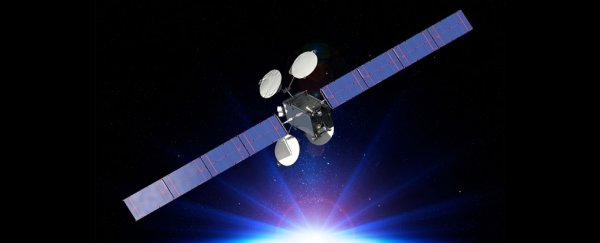Boeing has announced that the ABS–3A, the world's first all-electric propulsion satellite, has commenced its tour of duty.
The communications satellite is being operated by ABS, a Bermuda-based satellite network that provides TV, Internet, and cellular services across the world. Unlike conventional satellites, which have mostly used propellant systems that burn chemicals of one kind or another to get about the place, the ABS–3A makes use of a xenon-ion propulsion system to achieve thrust.
Specifically, the all-electric propulsion system uses electron bombardment to create xenon ions, which are then expelled by the spacecraft, producing thrust in the opposite direction.
While electric propulsion isn't as powerful as chemical propellants when it comes to producing raw thrust, it can be up to 1,000 times more efficient than chemical propellant, which is why it's suitable for long-range or long-duration space missions. Due to its high efficiency, with enough time, a constant emission of ions will also enable spacecraft to reach higher speeds than a chemical propellant.
As a largely stationary satellite, the ABS–3A won't need to be heading anywhere in a particular hurry, although its use of the propulsion system will enable it to adjust its altitude and position in orbit.
Boeing says the satellite contains a sufficient quantity of the inert, non-hazardous element xenon to power the craft's propulsion needs for its operational lifetime. The ABS–3A has an expected lifespan of 15 years, after which time it presumably becomes space junk, floating around in orbit and causing general mayhem.
While the ABS–3A is the world's first satellite to make use of a fully electric propulsion system, it's certainly not the first spacecraft to incorporate electric propulsion. Vessels using different kinds of electric propulsion have been in existence since the 1960s.
